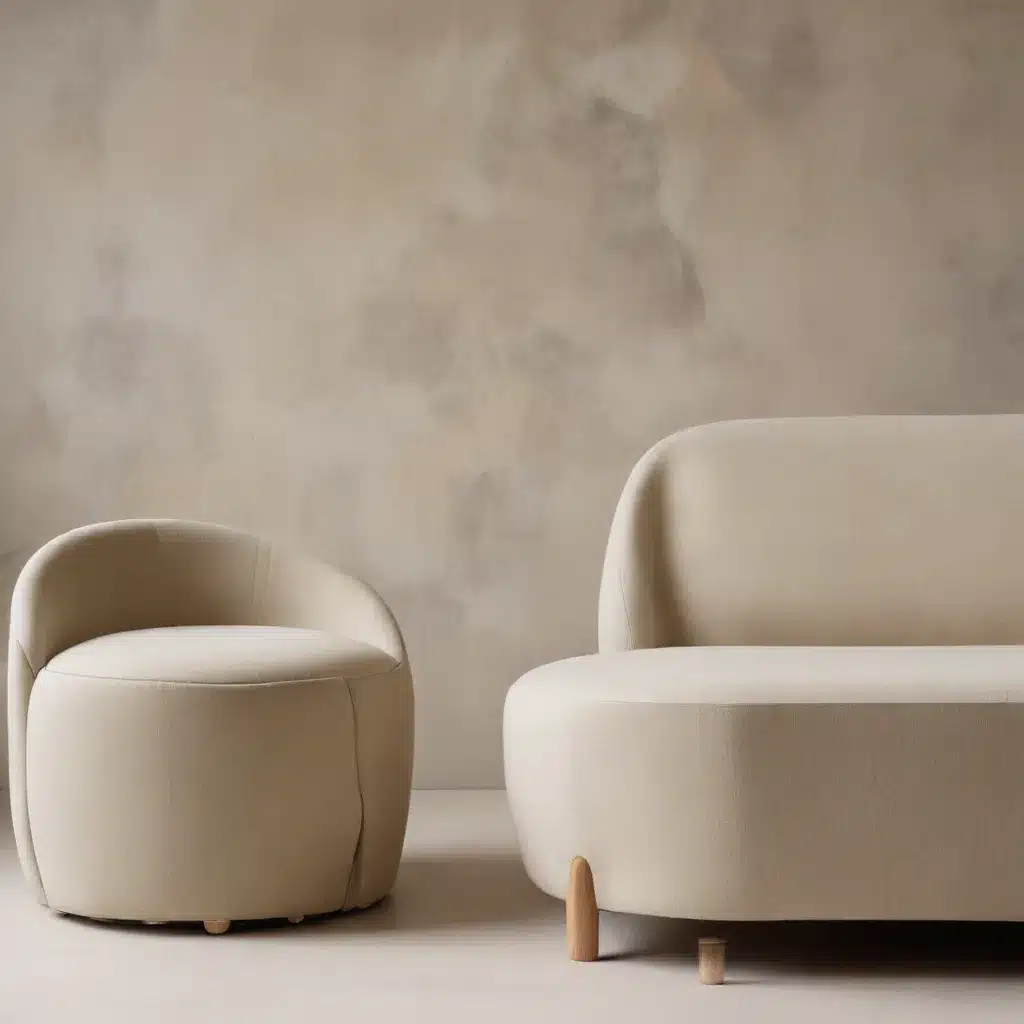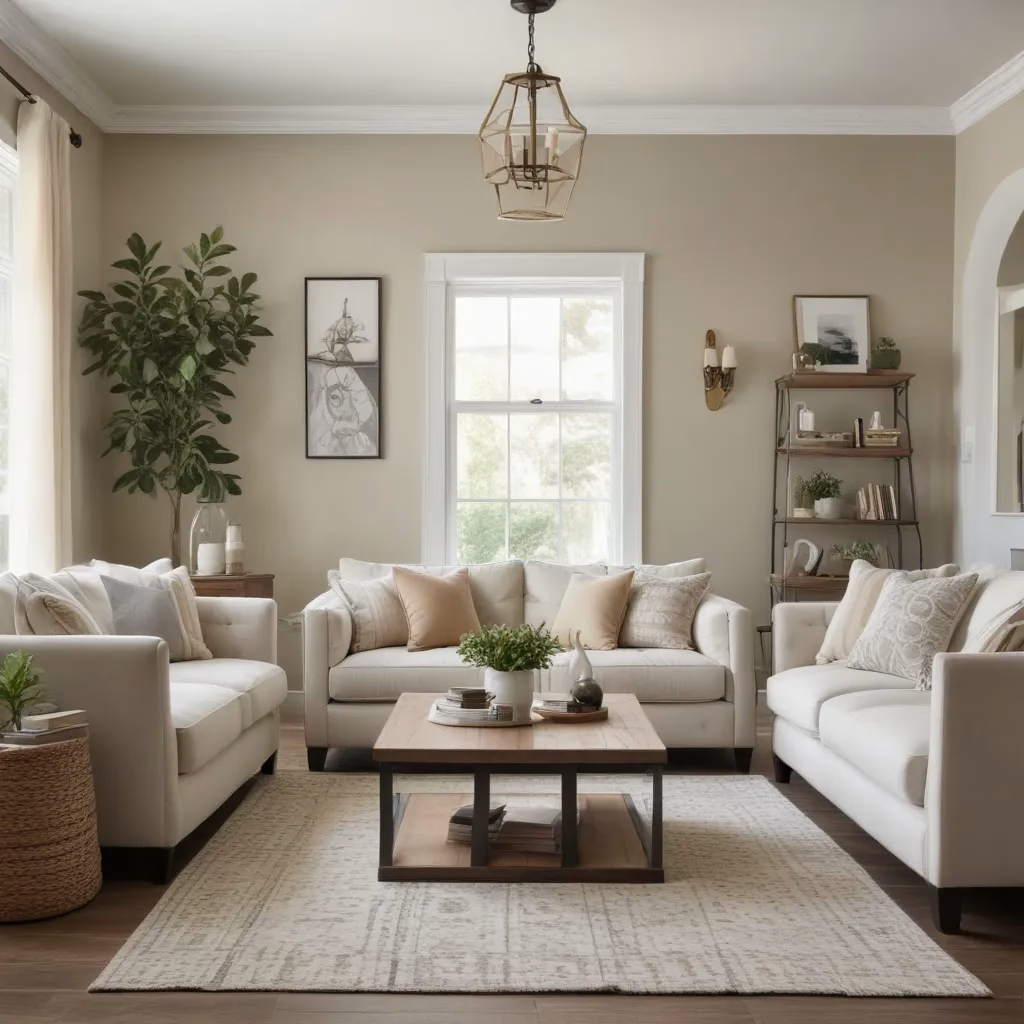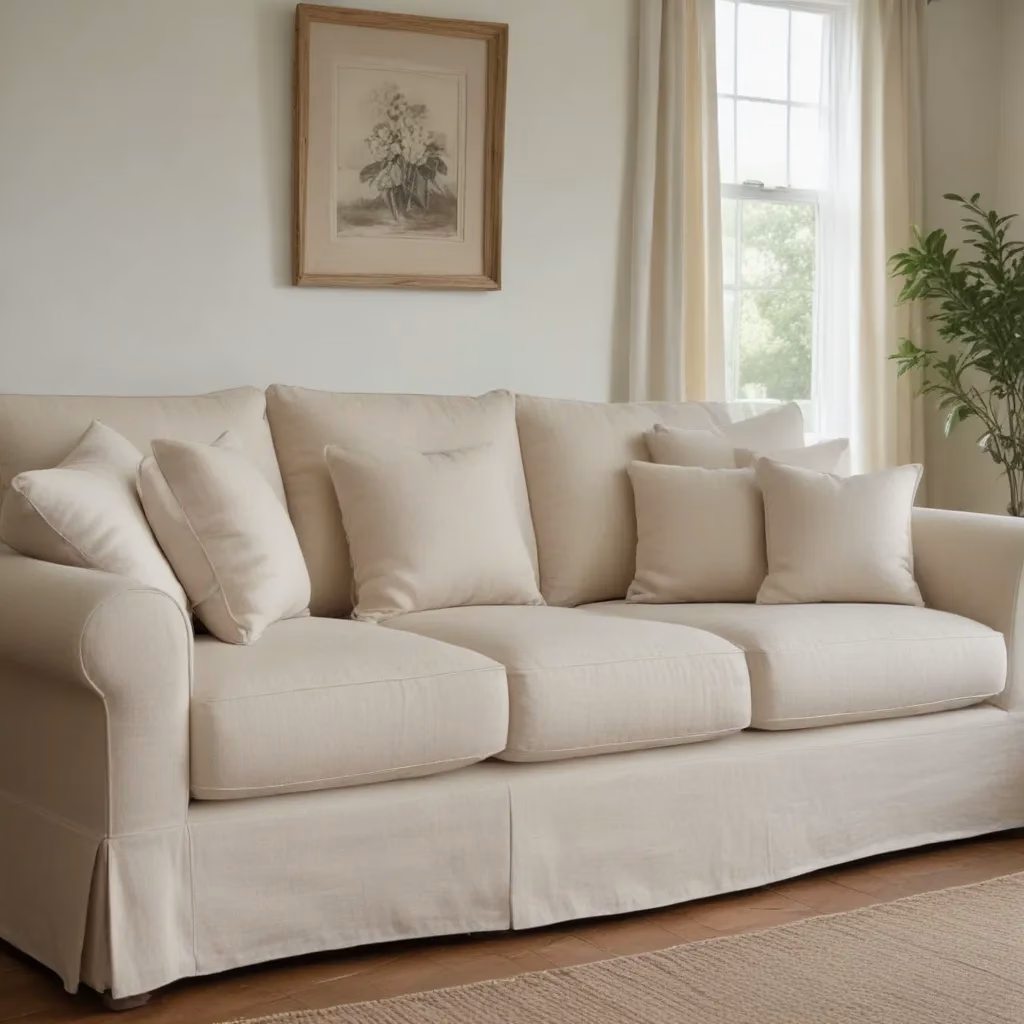
The Rise of Green Comfort in Modern Living Spaces
As a furniture specialist with over two decades of experience, I’ve witnessed a significant shift in consumer preferences towards eco-friendly home furnishings. This trend isn’t just a passing fad; it’s a reflection of our growing awareness of environmental issues and a desire to create healthier living spaces. Sustainable seating solutions, particularly those featuring eco-friendly fabrics, have become a cornerstone of this movement.
When I first started in this industry, the focus was primarily on aesthetics and comfort. While these factors remain important, today’s homeowners and designers are increasingly asking about the environmental impact of their furniture choices. It’s no longer enough for a sofa to look good and feel comfortable; it needs to align with our values and contribute to a more sustainable future.
I’ve had the pleasure of working with numerous clients who’ve made the switch to eco-friendly sofas and chairs. The satisfaction they express goes beyond the visual appeal of their new pieces. There’s a sense of pride and responsibility that comes with knowing their furniture choices are helping to reduce their environmental footprint. It’s this combination of style, comfort, and conscience that makes sustainable seating so appealing in today’s market.
Understanding Eco-Friendly Fabrics: A Closer Look at Sustainable Materials
When we talk about eco-friendly fabrics for sofas and chairs, we’re referring to materials that have a lower environmental impact throughout their lifecycle. This includes how they’re produced, used, and eventually disposed of. Let me break down some of the most popular options I’ve encountered in my work:
-
Organic Cotton: This is grown without the use of harmful pesticides or synthetic fertilizers. It’s a breathable, natural fabric that’s perfect for upholstery. I’ve seen a surge in demand for organic cotton sofas, especially among families with young children or those with sensitivities to synthetic materials.
-
Recycled Polyester: Made from post-consumer plastic bottles, this fabric gives new life to materials that might otherwise end up in landfills. It’s durable and easy to clean, making it a practical choice for busy households.
-
Hemp: This is one of the most sustainable natural fibers available. It grows quickly without the need for pesticides and requires less water than cotton. Hemp fabric is strong, durable, and naturally resistant to mold and mildew.
-
Bamboo: Another fast-growing, sustainable option. Bamboo fabric is soft, naturally antibacterial, and biodegradable. It’s an excellent choice for those looking for a luxurious feel with eco-credentials.
-
Wool: A renewable resource that’s biodegradable and naturally fire-resistant. Wool upholstery is durable, repels stains, and regulates temperature well.
In my experience, clients who choose these eco-friendly fabrics often report high satisfaction not just with the environmental benefits, but also with the quality and performance of the materials. It’s a win-win situation that I’m always excited to recommend.
The Impact of Sustainable Seating on Home Environments
Choosing eco-friendly seating solutions goes beyond just the materials used in upholstery. It’s about creating a healthier home environment overall. I’ve worked with many clients who’ve reported improvements in indoor air quality after switching to furniture made with sustainable materials and non-toxic manufacturing processes.
Traditional furniture can often release volatile organic compounds (VOCs) into your home, which can cause respiratory irritation and other health issues. Eco-friendly sofas and chairs, on the other hand, are typically made without these harmful chemicals. This means you’re not only making a choice that’s better for the planet, but also for your family’s health.
I remember one client who suffered from asthma and found significant relief after we replaced her old sofa with one upholstered in organic cotton. She was amazed at the difference it made in her daily comfort level. It’s experiences like these that reinforce my belief in the importance of sustainable seating solutions.
Balancing Aesthetics and Sustainability in Sofa Design
One common misconception I often encounter is that eco-friendly furniture sacrifices style for sustainability. Nothing could be further from the truth! In fact, some of the most stunning and innovative designs I’ve seen in recent years have come from brands committed to sustainability.
Modern eco-friendly sofas come in a wide range of styles, from sleek and contemporary to classic and traditional. The key is to work with a knowledgeable designer or retailer who can guide you to options that match your aesthetic preferences while still meeting your sustainability goals.
I’ve had the pleasure of helping clients create beautiful, cohesive living spaces centered around sustainable seating. For example, I recently worked on a project where we paired a mid-century modern sofa upholstered in recycled polyester with organic cotton accent chairs and a reclaimed wood coffee table. The result was a chic, environmentally conscious room that perfectly reflected the homeowner’s style and values.
Caring for Your Eco-Friendly Upholstery: Tips for Longevity
Proper care and maintenance are crucial for extending the life of your eco-friendly seating, which in turn maximizes its sustainability. Here are some tips I always share with my clients:
-
Regular Vacuuming: Use a soft brush attachment to gently remove dust and debris weekly. This prevents dirt from settling into the fibers.
-
Spot Cleaning: Address spills immediately using a clean, damp cloth. Avoid harsh chemical cleaners; instead, opt for mild, eco-friendly cleaning solutions.
-
Rotation: Regularly rotate cushions and change seating positions to ensure even wear.
-
Sunlight Protection: Position your furniture away from direct sunlight to prevent fading and fabric degradation.
-
Professional Cleaning: Schedule a professional deep clean once or twice a year, depending on usage. Look for cleaning services that use eco-friendly methods and products.
By following these simple steps, you can keep your sustainable seating looking great for years to come, further reducing its environmental impact.
The Future of Sustainable Seating: Innovations on the Horizon
As someone who’s passionate about furniture and sustainability, I’m always excited to see new innovations in this field. The future of eco-friendly seating looks bright, with several promising developments on the horizon:
-
Biodegradable Foam: Researchers are working on developing foam alternatives made from plant-based materials that can biodegrade at the end of their lifecycle.
-
3D-Printed Furniture: This technology has the potential to reduce waste in furniture production and allow for more customized, on-demand manufacturing.
-
Self-Repairing Fabrics: Scientists are exploring materials that can “heal” small tears or damage, potentially extending the life of upholstered furniture.
-
Smart Fabrics: Textiles embedded with technology that can monitor air quality or adjust temperature could make our seating even more sustainable and comfortable.
-
Circular Economy Models: More furniture companies are exploring take-back programs and ways to recycle or upcycle old furniture, closing the loop on production.
These advancements promise to make sustainable seating even more attractive and accessible in the coming years. It’s an exciting time to be in this industry, and I can’t wait to see how these innovations will shape our homes in the future.
Making the Switch: How to Incorporate Sustainable Seating in Your Home
If you’re considering making the switch to eco-friendly seating, you might be wondering where to start. Here are some practical steps I often recommend to my clients:
-
Assess Your Current Furniture: Before rushing out to buy new pieces, evaluate what you already have. Could any of your existing furniture be reupholstered with sustainable fabrics?
-
Set Your Priorities: Determine what aspects of sustainability are most important to you. Is it the use of organic materials? Low-VOC finishes? Local production?
-
Do Your Research: Look for reputable brands that are transparent about their materials and manufacturing processes. Don’t be afraid to ask questions about their sustainability practices.
-
Consider Your Lifestyle: Choose fabrics and styles that suit your daily life. A family with young children might prioritize durability and easy cleaning, while someone with allergies might focus on hypoallergenic materials.
-
Start Small: If you’re not ready for a complete overhaul, begin with accent pieces like an armchair or ottoman. This allows you to experiment with eco-friendly options without committing to a major purchase.
-
Think Long-Term: Invest in quality pieces that will stand the test of time. A well-made sustainable sofa might cost more upfront but will likely last longer and have less environmental impact in the long run.
Remember, transitioning to a more sustainable home doesn’t have to happen overnight. It’s a journey, and every step counts. I’ve seen clients transform their living spaces gradually, and the sense of accomplishment they feel is truly rewarding.
The Role of Certifications in Sustainable Furniture
When shopping for eco-friendly seating, you’ll likely encounter various certifications and labels. These can be incredibly helpful in verifying the sustainability claims of different products. Here are some of the most common certifications I advise my clients to look for:
-
Global Organic Textile Standard (GOTS): This certifies that textiles are made with organic fibers and meet strict environmental and social criteria.
-
OEKO-TEX Standard 100: This ensures that textiles have been tested for harmful substances and are safe for human use.
-
Forest Stewardship Council (FSC): For wooden furniture components, this certification guarantees that the wood comes from responsibly managed forests.
-
Greenguard: This certifies that products have low chemical emissions, contributing to healthier indoor air quality.
-
Cradle to Cradle: This holistic certification looks at a product’s entire lifecycle, from material health to social fairness.
While these certifications are valuable tools, it’s important to remember that they’re just part of the picture. I always encourage my clients to look beyond the labels and consider the overall practices of the furniture company. Some smaller, local manufacturers might not have official certifications but still adhere to high environmental standards.
Collaborating with Interior Designers for Sustainable Spaces
In my years of experience, I’ve found that collaborating with interior designers can be incredibly beneficial when creating sustainable living spaces. Designers bring a wealth of knowledge about current trends, space planning, and how to balance aesthetics with functionality.
When working on eco-friendly projects, I’ve noticed that designers often have access to a wider range of sustainable materials and can help clients navigate the sometimes overwhelming world of green furniture options. They can also provide valuable insights on how to incorporate sustainable seating into existing decor or as part of a larger home renovation.
I recently worked with a designer on a project where the client wanted to create a fully sustainable living room. The designer’s expertise was crucial in selecting a beautiful organic cotton sectional that not only met the client’s eco-friendly criteria but also perfectly fit the room’s dimensions and complemented the overall design scheme.
If you’re considering a major furniture overhaul or are building a new home, I highly recommend consulting with a designer who specializes in sustainable interiors. Their expertise can help you create a cohesive, beautiful space that aligns with your environmental values.
The Economic Perspective: Cost Considerations of Sustainable Seating
One question I frequently encounter from clients is about the cost of sustainable seating options. It’s true that eco-friendly furniture can sometimes come with a higher price tag, but it’s important to consider the long-term value.
In my experience, sustainable sofas and chairs often offer better durability and longevity compared to their conventional counterparts. This means you may end up spending less over time as you won’t need to replace your furniture as frequently.
Additionally, as demand for eco-friendly options has increased, more affordable sustainable seating solutions have entered the market. It’s now possible to find options at various price points, making it easier for people with different budgets to make environmentally conscious choices.
Here’s a breakdown of potential costs and savings:
| Factor | Conventional Furniture | Sustainable Furniture |
|---|---|---|
| Initial Cost | Often lower | May be higher |
| Lifespan | 5-7 years on average | 10-15 years or more |
| Maintenance Costs | May require more frequent cleaning or repairs | Often more durable and easier to maintain |
| Health Costs | Potential off-gassing and allergen issues | Typically healthier for indoor air quality |
| Environmental Cost | Higher carbon footprint | Lower environmental impact |
When you factor in all these elements, sustainable seating can often be a more economical choice in the long run. It’s about shifting our perspective from seeing furniture as a disposable item to viewing it as a long-term investment in our homes and the environment.
Creating a Cohesive Look with Eco-Friendly Fabrics
One concern I often hear from clients is how to create a cohesive look when incorporating eco-friendly fabrics into their existing decor. The good news is that sustainable textiles come in a wide array of colors, patterns, and textures, making it easier than ever to find options that complement your style.
Here are some tips I’ve found helpful when working with eco-friendly fabrics:
-
Use Neutral Bases: Choose larger pieces like sofas in neutral, sustainable fabrics. This provides a versatile foundation that can easily adapt to changing decor trends.
-
Add Pops of Color: Incorporate colorful eco-friendly throw pillows or blankets to add visual interest and tie in with your existing color scheme.
-
Mix Textures: Combine different sustainable fabrics to create depth and interest. For example, pair a smooth organic cotton sofa with a textured hemp armchair.
-
Consider Patterns: Many eco-friendly fabrics come in beautiful patterns. Use these on accent pieces to add personality to your space.
-
Coordinate with Natural Elements: Sustainable fabrics often pair beautifully with other natural materials like wood, stone, or plants.
Remember, creating a cohesive look is about finding harmony between different elements. Don’t be afraid to mix and match different eco-friendly fabrics – this can actually add character and uniqueness to your space.
The Global Impact of Choosing Sustainable Seating
As we wrap up our discussion on sustainable seating solutions, it’s important to zoom out and consider the broader impact of our furniture choices. Every time we opt for eco-friendly seating, we’re contributing to a larger movement towards sustainability in the furniture industry.
By choosing sustainable options, we’re:
-
Supporting Ethical Manufacturing: Many eco-friendly furniture brands prioritize fair labor practices and safe working conditions.
-
Reducing Carbon Footprint: Sustainable materials and production methods often have a lower carbon footprint compared to conventional furniture manufacturing.
-
Conserving Resources: Using recycled or rapidly renewable materials helps conserve our planet’s finite resources.
-
Promoting Innovation: Our choices as consumers drive demand, encouraging further innovation in sustainable materials and manufacturing processes.
-
Protecting Ecosystems: Sustainable forestry practices and organic farming methods help preserve biodiversity and protect natural habitats.
In my years in this industry, I’ve seen firsthand how consumer choices can drive significant change. The growing demand for sustainable seating has pushed manufacturers to improve their practices and offer more eco-friendly options. It’s a testament to the power we hold as consumers to shape a more sustainable future.
As we look to the future of home furnishings, I’m optimistic about the continued growth of sustainable options. The trend towards eco-friendly seating is more than just a passing fad – it’s a fundamental shift in how we think about our homes and our impact on the planet.
Whether you’re in the market for a new sofa or simply curious about sustainable living, I hope this discussion has provided valuable insights into the world of eco-friendly seating. Remember, every choice we make in our homes has the potential to contribute to a healthier planet. By opting for sustainable seating solutions, we’re not just creating beautiful, comfortable living spaces – we’re also taking a step towards a more sustainable future for all.
For more information on sustainable furniture options and expert advice on creating eco-friendly living spaces, visit Sofa Spectacular. Our team is always ready to help you find the perfect sustainable seating solution for your home.



